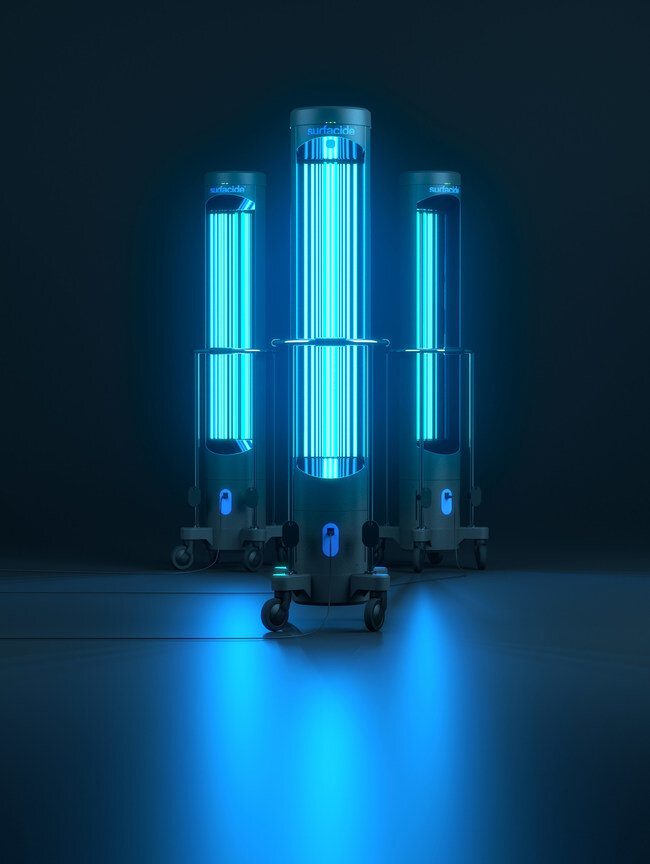December 18, 2020
Surfacide has been a leading, trusted, and scientifically validated source in fighting healthcare-acquired infections by reducing the presence of viruses’ and dangerous microorganisms in hundreds of hospitals and healthcare facilities around the globe.
But with the COVID-19 pandemic making the deadly virus a significant threat to patient and frontline workers’ safety, more than a dozen top pediatric hospitals around the country, plus in the United Kingdom, have enlisted Surfacide’s powerful Helios System of UV robots to help protect and keep their young patients and healthcare workers safe.
Surfacide notes their UV-C technology is scientifically proven to inactivate coronavirus, the family of viruses that make up SARS-CoV-2 and COVID-19. Founded in 2010, Surfacide is the world’s first and only patented, automated, multiple-emitter UV-C system to safely eradicate harmful bacteria and viruses from environments. Using three light-emitting robots simultaneously, Surfacide provides UV-C energy to more exposed areas than single emitters—boosting power, dosage and efficacy in as little as *5 minutes.
In addition to being deployed in more than 500 hospitals, hotels and other large institutions around the world, Surfacide is being utilized in more than a dozen leading pediatric hospitals including:
- Children’s Hospital of Pennsylvania
- Children’s Hospital Los Angeles
- Children’s Hospital of Wisconsin
- Holtz Children’s Hospital (Miami)
- Lurie Children’s Hospital (Chicago)
- Children’s Hospital of Colorado (4 Locations)
- Texas Scottish Rite Hospital For Children
- Cincinnati Shriners Hospital For Children
- Arkansas Children’s Hospital (Northwest and Little Rock)
- The Children’s Hospital at OU Medical Center
- UPMC Children’s Hospital of Pittsburgh
- Children’s Hospital of Orange County
- Royal Manchester Children’s Hospital (Manchester, England)
According to Royal Manchester Children’s Hospital, there was an 86% decrease in the bacteria contaminant counts after using Surfacide in comparison to just 63% with traditional cleaning methods.
When speaking about vaporization/fogging, RMCH Unit Service Improvement and Transformation Lead Julie Jolly said, “We haven’t had to use that device for nearly 2 years since we introduced the [Surfacide] UV-C. That’s also had a massive cost (reduction) impact on the hospital.”
“We are grateful that so many pediatric hospitals have adopted Surfacide’s powerful, trusted UV-C robot technology during these critical times,” said Gunner Lyslo, Founder and CEO of Surfacide. “We are proud that Surfacide UV-C is having a positive impact in combating COVID-19 and protecting our most vulnerable young patients and all of the frontline essential healthcare workers that care for them.”
*Peer-reviewed Published data from The University of Iowa discusses the efficacy of Surfacide’s automated, multiple emitter UV-C system against coronavirus MERS-CoV.
View all studies here.



